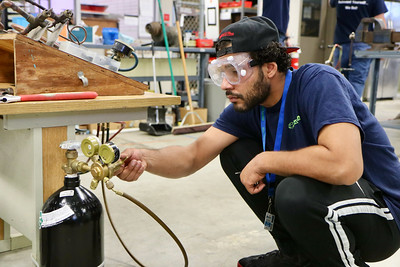Flatland, a digital publication of Kansas City PBS, published a nice analysis of the troubles and triumphs of community and technical colleges in Kansas and Missouri. Both Kansas and Missouri fund separate community colleges and technical colleges. In the current economy, let’s just say there are winners and losers.
The Kansas Board of Regents, which oversees all public higher education in the state, is worried about the future of community colleges there. In the past decade, community college enrollment has dropped by nearly 30%. Technical college enrollment has nearly doubled. Graduation rates at community colleges are in the low 30% range. At technical colleges, graduation rates consistently hover around 75%-80%.
The difference? Technical colleges, which focus on occupational and vocational education programs, have high-wage jobs waiting for their students on graduation day. Community college? Not so much. And the difference in approach shows.
The article quotes Tom Brock, who is the head of the Community College Research Center at Columbia University. Brock was speaking about the notion that community colleges are contrarian in nature and have been victimized by a long positive economic cycle.
“Community colleges that wait out the economy produce students with lackluster wages.”
In other words, community colleges whose strategy is to merely hang on until the economy sours don’t produce the economic benefit that technical colleges do. Technical colleges produce value regardless of the state of the economy. That’s why their classrooms are full, and they can count on graduating eight out of every ten students.
The graduation rate is important. Students want to know that their investment of time and money will lead to something valuable. They need to know that schools have plans and practices that will help them graduate.
Learning survival skills from technical colleges
Not every student will graduate from a technical college, but these students know very early in their studies whether they’re going to move forward or not. Students commit to finishing a program, which has a measurable, positive effect on graduation rates. At community colleges, the comparatively low number of students who graduate may not have any idea what they can do with their degrees following graduation and may leave school with little to no marketable skills.
That’s a waste of time and money on everyone’s part. Community colleges must do a better job of building value into their degree programs and helping students understand how and where they can market their skills.
Technical colleges give their students reasons to enroll and complete their programs. Community colleges often miss the mark because they focus less on long term value, employment prospects, marketability, and income potential.
Community colleges also falter because they aim their return-on-investment toward employers. They don’t realize that they are focusing (albeit) indirectly on employers when they deliver a high quality education to their students. Community colleges need to recognize that their students are their customers. Employers don’t pay for students to attend classes; students do. And community colleges can’t continue to treat students like third-party beneficiaries of a private conversation between the college and the employer.
It’s clear that occupational education holds higher promise for delivering the high-wage, high-demand opportunities that community colleges need if they want to keep their doors open. It is also clear that we cannot wait for another recession to see if we can revive our community colleges.
Photo Credit: Pasco County Schools , via Flickr





















